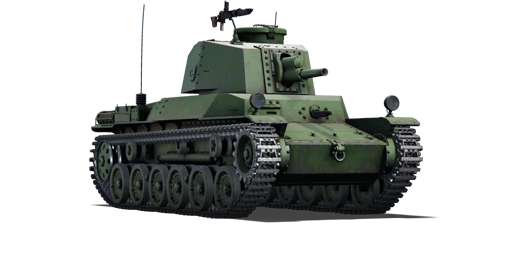The Type 2 Ho-I was designed to uparm the Chi-Ha's 57 mm low velocity cannon to a 75 mm low velocity to beat bunkers the Chi-Ha couldn't. Development to squeeze a 75 mm into the turret of the Chi-Ha or Chi-Ha Kai took some time and only by 1941 was a Type 1 Experimental Ho-I ready, but for production the Chi-He hull was chosen to ease up production.
The Ho-I was introduced alongside the rest of the Japanese ground forces tree in Update 1.65 "Way of the Samurai". Essentially a Chi-He with a new turret and a short-barrelled 75 mm gun, it was designed to supplement the Chi-Has in their infantry support role and take over bunker-busting duties by delivering a more powerful impact. The Ho-I can also load HEAT shells, mimicking the role of the Pz.IV E in a smaller, faster package, albeit with a longer reload time. Its low-velocity HEAT shell, with 90 mm of penetration, can effectively handle most targets, and combined with its average mobility, favours close-range engagements. While longer-range engagements are possible, they require excellent marksmanship due to the challenging ballistics.















